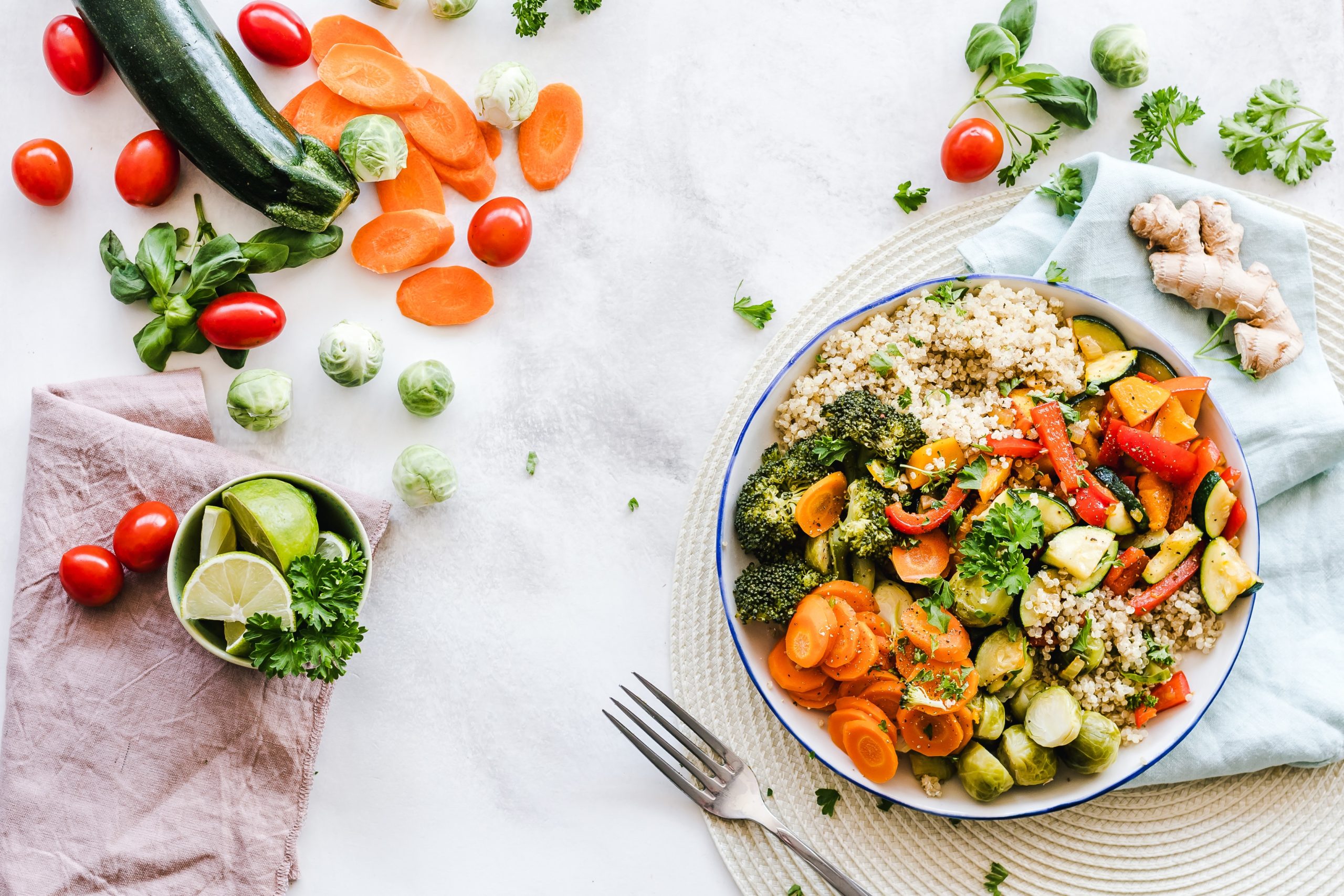Are you a member of society trying to go about your life, juggling a list of things on any given day, while also trying to nourish yourself and your family daily? There’s a very good chance everyone could answer yes to that question.
Two of the biggest roadblocks when it comes to eating healthy and living well are time and money. Time is not a renewable resource. We never seem to have enough of it, and we definitely can’t afford to waste it (or our money, for that matter).
While people think eating healthy is expensive, it doesn’t have to be if you’re strategic. Needless to say, I’m an advocate for meal planning each and every week.
Today, I’ll walk you through the exact method I use to plan out my nutritious meals for myself and my clients each week so you can try this sure-fire way to save a little time and money yourself.
But before I get started, I want to mention the difference between meal prepping and meal planning. While meal prepping can also be a time-saving hack for many, this does require dedicating time each week to cooking and preparing food.
Personally, I have gone through seasons of my life where this has been incredibly helpful, but also seasons where I cannot spare that amount of time in one day. Meal planning, on the other hand, can take less than 15 minutes and you will still set yourself up for success.
MEAL PLANNING 101: STAY NOURISHED AND SATISFIED ALL WEEK LONG
STEP ONE: LOOK AHEAD
Grab your calendar, look at the week ahead, and answer the following questions:
- How many meals will I be eating at home?
- Do I have any social events planned that will take the place of a meal?
- Do I have any events that will require me to bring food?
Write down your answers. Then for the meals you will be eating at home, determine how many people you will be cooking for. Based on the number of meals and servings you will need for the week ahead, determine how many separate meals you will need to prepare.
For example, when I cook for just my partner and myself, we always have 1-2 servings leftover. These then become our lunches for the next day, cutting down the total number of meals I have to prepare throughout the week.
This new number you come up with will be the basis for the rest of your plan.
STEP TWO: CHOOSE THE MEALS
Next, pull from your mental recipe list, Pinterest, Instagram, or anywhere else you collect recipes and choose the meals you will make.
If you will be crunched for time and will not be able to cook a full recipe each night, I recommend a simple meal structure to use instead: Protein, Vegetable, Fat, and Carbohydrate. From these buckets, you can choose ingredients rather than recipes.
For example, you could have roasted salmon, broccolini, and asparagus with avocado oil served with quinoa. Such a simple meal to prepare, but the salmon provides your protein (and some healthy omegas), the broccolini and asparagus are your vegetables, the avocado oil used for cooking is your fat source, and quinoa is your carbohydrate.
The great thing about meals like this is you can easily decide how many servings you want to make.
STEP THREE: WRITE YOUR LIST
Looking at your recipe and meal choices for the week, list out all of the ingredients you will need to prepare everything. Then, take a look in your fridge and pantry and cross off all the items you already have. Add any snacks or additional items you want for the week, and use this list to get groceries. When you have a list and a plan going into the store, you are more likely to save money by cutting down on impulse purchases.
If there are any items that may be better to purchase the day of, such as fresh fish, make a note of that for Step Four.
STEP FOUR: DRAFT A PLAN
Pull up a calendar or write out the days in a notebook, and go ahead and fill in each mealtime with the meal you will eat and when. Please understand, you do not need to follow this plan exactly throughout the week. Things will change.
Maybe you have more leftovers than expected or you aren’t as hungry as you thought for a meal. But, by doing this step, you are preventing some decision fatigue when the inevitable, “What’s for dinner?” question comes along because you’ll always have an answer!
If you need to purchase anything fresh, write in which day and time you will be picking up that ingredient during the week. Go ahead and add that grocery run to your main calendar as well, so you don’t forget. And remember, aim to go in with a list to prevent impulse purchases.
STEP FIVE: ADAPT THE PLAN
Midway through the week, take a look at your remaining groceries and your original plan. Make any adjustments as needed. If any of your ingredients are about to go bad, consider freezing them for next week. Then, when it comes time for next week’s plan, you already have a head start!
These simple steps will set you up for a week full of meals that will keep you nourished and satisfied. In less than 15 minutes, you’ll have a plan in place that is easily adaptable for whatever the week throws your way. Time may not be a renewable resource, but there are always new ways to use it more efficiently.
For more on Mikala, head here!
Looking for a quick and easy recipe to include in your meal planning? Try our Quick And Easy Baby Dal Recipe!


+ show Comments
- Hide Comments
Free Resources
Take A Look at the latest from ITN:
Courses:
add a comment